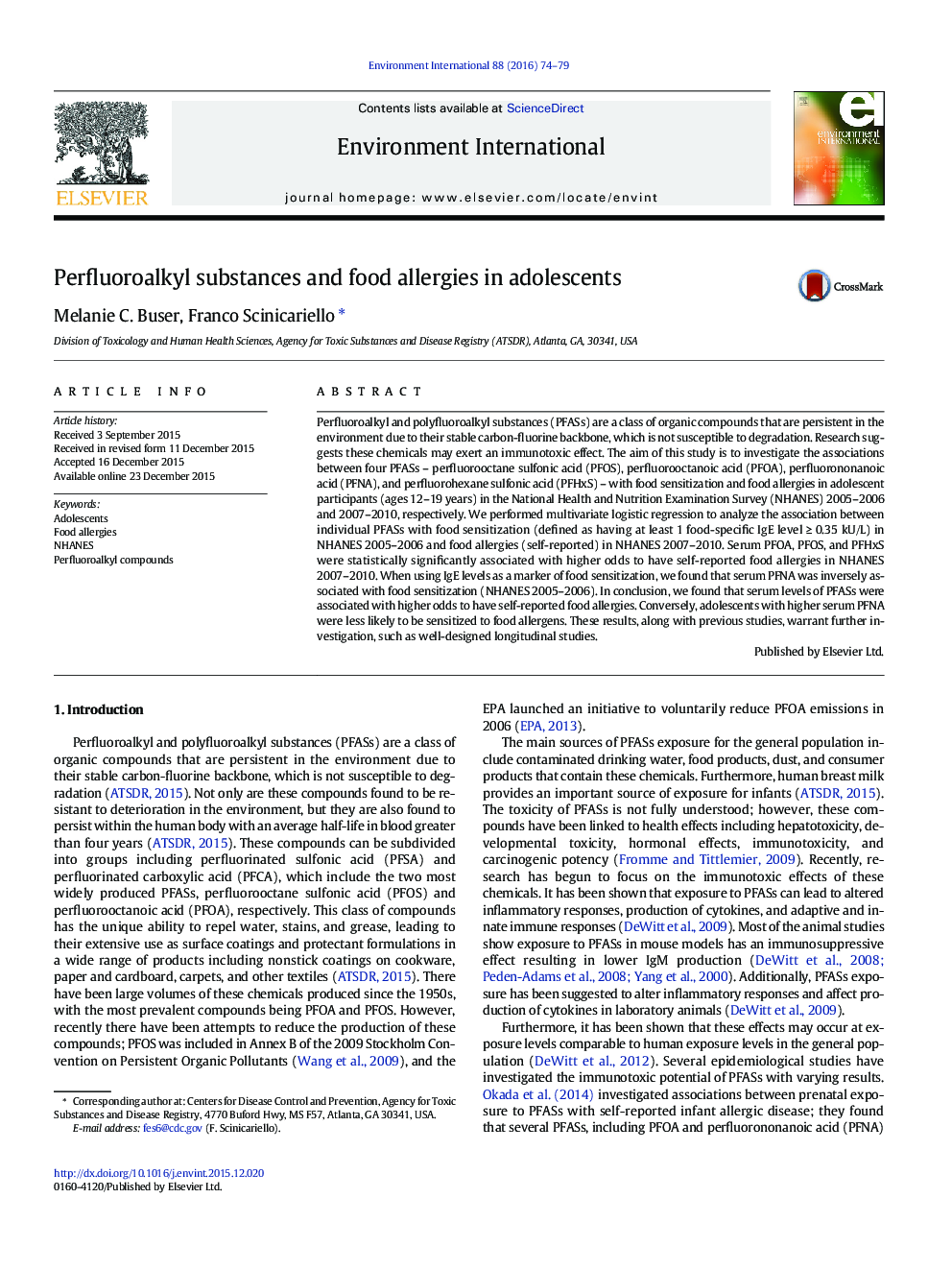| کد مقاله | کد نشریه | سال انتشار | مقاله انگلیسی | نسخه تمام متن |
|---|---|---|---|---|
| 6313350 | 1619040 | 2016 | 6 صفحه PDF | دانلود رایگان |

- Analyses of PFASs with food sensitization (IgE level â¥Â 0.35 kU/L) in NHANES 2005-2006.
- PFNA was associated to decreased sensitization to food allergens.
- Analyses of PFASs with self-reported food allergy in NHANES 2007-2010.
- Several PFASs were associated with higher odds to have self-reported food allergies.
Perfluoroalkyl and polyfluoroalkyl substances (PFASs) are a class of organic compounds that are persistent in the environment due to their stable carbon-fluorine backbone, which is not susceptible to degradation. Research suggests these chemicals may exert an immunotoxic effect. The aim of this study is to investigate the associations between four PFASs - perfluorooctane sulfonic acid (PFOS), perfluorooctanoic acid (PFOA), perfluorononanoic acid (PFNA), and perfluorohexane sulfonic acid (PFHxS) - with food sensitization and food allergies in adolescent participants (ages 12-19 years) in the National Health and Nutrition Examination Survey (NHANES) 2005-2006 and 2007-2010, respectively. We performed multivariate logistic regression to analyze the association between individual PFASs with food sensitization (defined as having at least 1 food-specific IgE level â¥Â 0.35 kU/L) in NHANES 2005-2006 and food allergies (self-reported) in NHANES 2007-2010. Serum PFOA, PFOS, and PFHxS were statistically significantly associated with higher odds to have self-reported food allergies in NHANES 2007-2010. When using IgE levels as a marker of food sensitization, we found that serum PFNA was inversely associated with food sensitization (NHANES 2005-2006). In conclusion, we found that serum levels of PFASs were associated with higher odds to have self-reported food allergies. Conversely, adolescents with higher serum PFNA were less likely to be sensitized to food allergens. These results, along with previous studies, warrant further investigation, such as well-designed longitudinal studies.
Journal: Environment International - Volume 88, March 2016, Pages 74-79